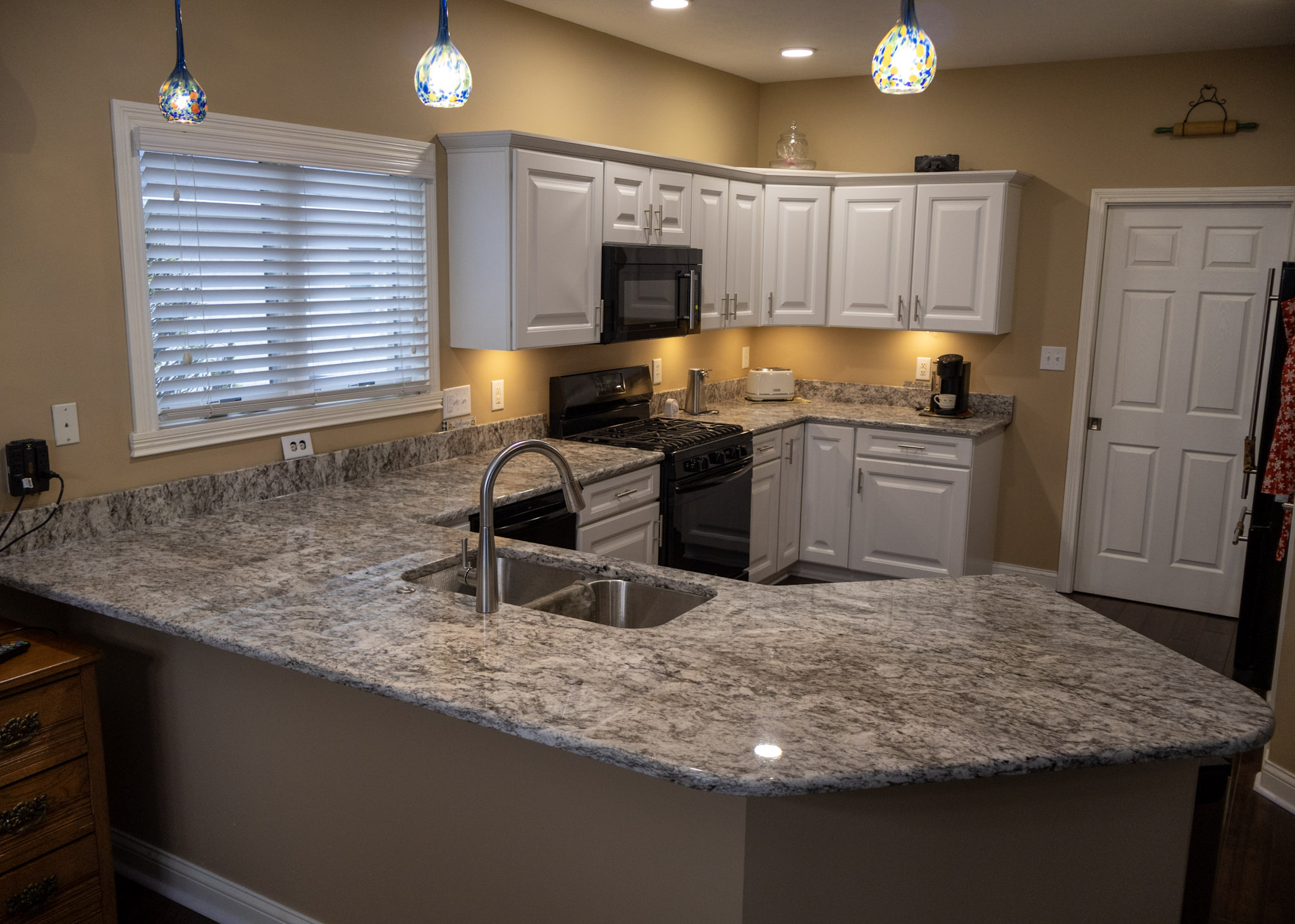What comes to mind when you think of a granite countertop? A heavily speckled red and gray expanse of stone? A light cream-colored background stone with soft charcoal veins? A sleek black countertop with shimmering mica chip swirls? With granite, so much is possible!
That’s why many homeowners find the choice of granite more than a little overwhelming. Here’s what you need to think about when making this decision.
Consider The Color Language Of Your Kitchen
The first thing to think about when selecting granite is how the color will interact with the rest of your kitchen. Granite comes in a wide spectrum of tones, including white, beige, gray, brown, and black. A light-colored granite can brighten up a smaller kitchen or enhance a clean, open concept design.
On the other hand, darker shades offer contrast and drama, especially in spaces with lighter cabinets or plenty of natural light. Neutral tones like taupe or gray can strike a balance between subtle and bold, blending well with a variety of design elements.

Think About Movement And Pattern
Granite is formed deep within the earth, and its natural formation gives it veining, speckles, and swirls that vary from one slab to the next. Some granites have a uniform pattern that feels calm and consistent.
Others have bold movement, with striking veins that flow across the surface. The visual texture of the stone can create a focal point in your kitchen or act as a supporting feature depending on your cabinetry and backsplash choices.
If your design style leans modern and minimal, you may prefer something with a fine-grained or consistent pattern. If you want to make a statement, look for slabs with bold contrast and dynamic flow.
Learn About Your The Finish Options
The finish of your granite slab affects both the appearance and the tactile experience. A polished finish brings out the depth of color and adds a glossy surface that reflects light. This can help brighten up the space and create a more refined look.
A honed finish offers a soft, matte texture that feels grounded and understated, ideal for casual or rustic kitchens. There’s also a leathered finish, which adds subtle texture and a slight sheen without being overly reflective.
The right finish depends on how you want your countertops to feel and how much maintenance you’re willing to manage day to day– and the good news is that regardless of finish, granite countertops are always going to be low maintenance. All they need is soap and water for cleaning and an occasional re-sealing.

Match The Thickness To Your Kitchen Style
Granite slabs are typically available in two main thicknesses: around 2 centimeters and 3 centimeters. Thicker slabs offer a more substantial, bold profile that works well in spacious kitchens or contemporary designs. Thinner granite can appear sleeker and more lightweight, and it’s often a good fit for minimalist styles.
Edge detailing can also change the way thickness is perceived, so it’s worth considering how you want the countertop edges shaped. A thicker slab with a clean edge can look strong and architectural, while a thinner slab with a more decorative edge can feel delicate and refined.
Test Samples Against Other Design Elements
Granite countertops are a serious investment that can last a lifetime, so you need to make sure that you’re happy with how the stone you choose looks in your home. And that means samples!
Bringing granite samples into your space can help you get a sense of how the stone will behave under your lighting and next to your cabinetry, flooring, and appliances. The same piece of granite can look completely different depending on its surroundings.
Lighting especially can affect how the veining or speckling appears, and how warm or cool the stone looks in context. This is a good step to help you feel confident that your final selection brings the entire room together in a way that feels intentional and cohesive.
Start With High-Quality Materials From Olympia Stone
Your new kitchen deserves a surface that’s as strong as it is stylish. Granite offers a natural beauty and durability that few materials can match, but finding the right type requires attention to tone, texture, and detail.
Olympia Stone provides an expert-curated selection of high-quality granite slabs to help you build a kitchen that reflects your style and stands the test of time. Contact us today for a free quote and to make a showroom appointment to find the granite that’s right for your project.



